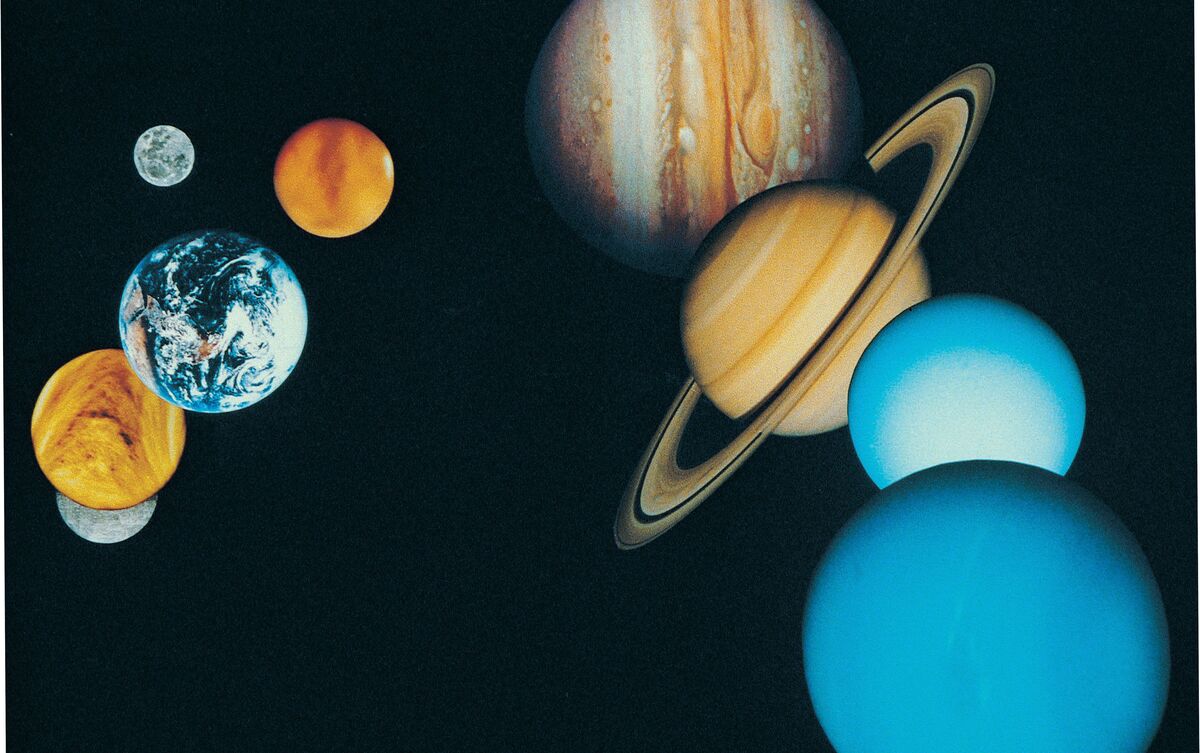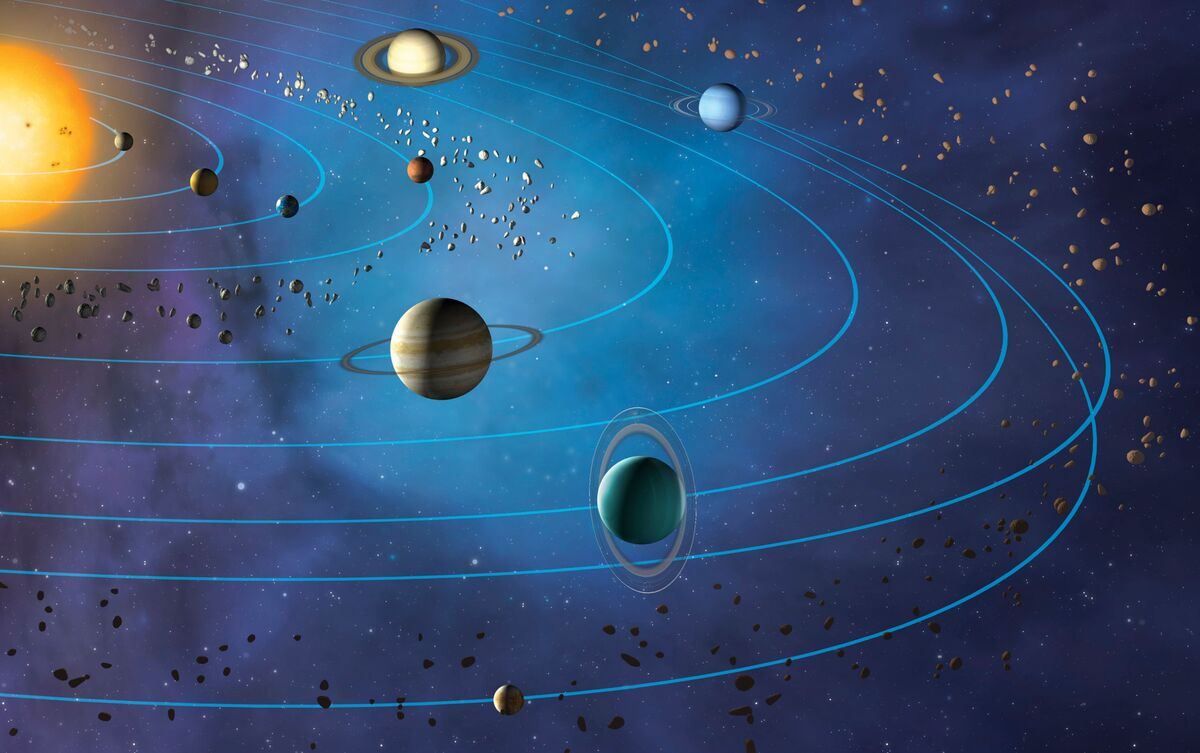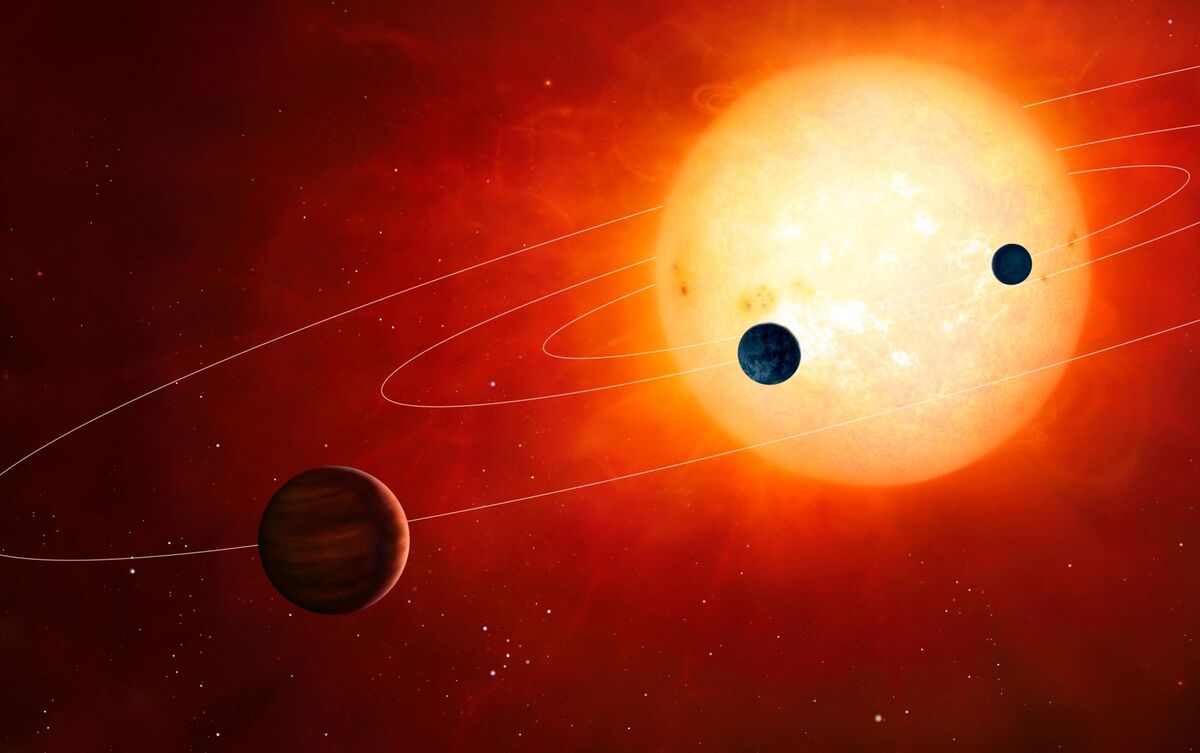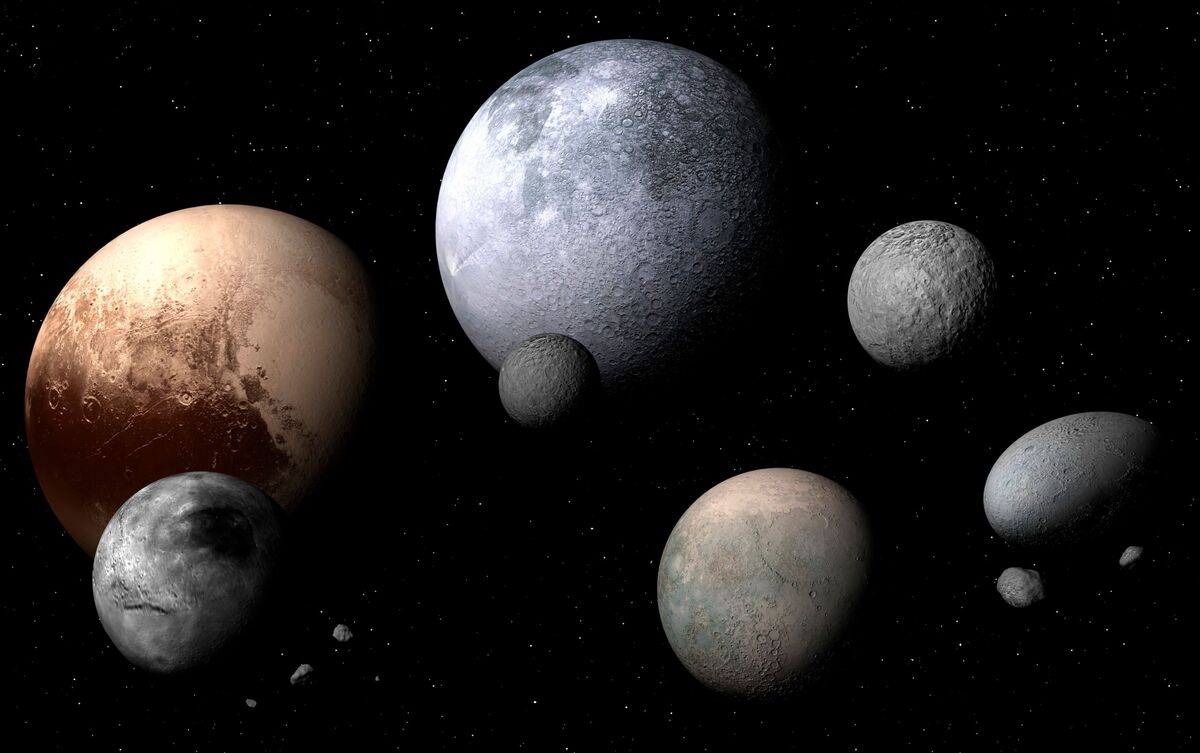Table of contents
Understand more about the stars!

Since the oldest civilizations, the belief that the stars have interference in life has been studied. Their movements and positions are references for the analysis of possible influences on the inhabitants of the Earth, as well as being used to shed light on future prospects.
In Ancient Egypt, even the temples were built taking into account the position of the stars. Therefore, some of its buildings have an irregular structure, intending to follow the position of the stars, which moved during the long periods of construction.
The Sun, Moon, Mars, Venus, Mercury, Jupiter, Saturn, Neptune, Uranus and even Pluto, which is considered a dwarf planet by astronomy, are analyzed by Astrology scholars. Besides these, the constellations, which have the same name as the zodiac signs, are also studied. Read on and understand the stars in this article!
What are the stars?

The definition of stars refers to celestial bodies, i.e. all physical matter that exists in outer space. But "star" is the expression used when we want to mention a particular object, not the group. The stars analyzed in Astrology are planets and stars that reside in the solar system. Check more about them below!
Origin and meaning
The origin of the stars is studied by the area of science called Cosmology, a field that focuses on investigating the origin of the universe and the birth of stars and planets. In addition to Cosmology, various strands of religions and beliefs have developed theories and concepts about the mysterious emergence of the entire universe and its stars.
Each belief attributes a distinct meaning to their origin, in the same way that it also analyzes their influence, according to its point of view. For the societies of Ancient Egypt, for example, the position of a star could be determinant for the choice of the location of a pyramid.
In the same period, the study of the stars was used to create calendars and to predict natural phenomena. However, even before the Egyptians used the stars as a reference for harvesting stages, the Sumerians were already observing the heavens in search of answers to questions that afflicted life around IV B.C.
Astronomy vs. Astrology
The Babylonians created the zodiac and the 12 divisions of the sky, but they were not the only ones to observe the stars. Although this was not the first society to study the sky, the people of Ancient Egypt are the most commonly associated with Astrology, possibly because they made this practice explicit in various aspects of their culture, from religion to architecture.
For the study of the stars in this period, star charts were used. However, it is still believed that the so-called star charts and their analysis did not differentiate Astrology from Astronomy, taking into account only the study of the stars, without the need to make a specific distinction between research in a scientific way and esotericism.
After the creation of the scientific method, the two fields began to be distinguished, Astrology being the analysis of the position and movement of the stars, used to make predictions and analyses related to zodiac signs. Meanwhile, Astronomy, which arose from the same principle of celestial observation, became the study of the celestial bodies and the universe.
Stars in the houses of the zodiac
It is important to understand what the houses of the zodiac really are. The Astrological Zodiac is divided into twelve houses, which are occupied by the position in which the signs and the stars were positioned in the sky at the time of birth of the person being analyzed. In addition, each house also represents a specific aspect of life.
The stars which reside in the zodiacal houses can determine aspects of the way someone behaves in front of specific situations or determine the motivations of that person in relation to some issues. Therefore, to understand what these influences are, it is necessary to study the stars.
From the astrological meaning of each star, it is possible to start the analysis of the result of their interference in a certain zodiacal house. But the study of the description of each of the twelve houses is also necessary. Therefore, it is possible to reach a more complete investigation only by crossing the data present in the houses and the stars.
Applications
After learning the relationship between the stars and the zodiacal houses, the process of chart analysis begins. This application begins in house 1, where the ascendant resides. This house, for example, demonstrates the most explicit characteristics of the individual: physical aspects and how he is seen.
In the first house, we can also find information related to the way the person wants to be seen by others and to his/her personal form of self-affirmation. From the study of the 1st house, it is also possible to determine the attitude towards new projects, because it determines the beginning of the person's relationship with the world.
In addition, knowledge of the star present in this house can also help to understand the primordial personality with which one begins life and relationships with the world.
In this way, following the same method applied in the study of the 1st house, studies are made and concepts elaborated about the relations of the positions of the stars in the sky, during the exact moment in which the person was born. This determines other aspects about their characteristics and their behaviour.
Classification of stars

The study of the stars can be fascinating, as their characteristics are complex and require careful observation to unravel the mysteries that accompany them. To understand more about each planet and its meanings, read below!
Personal Planets
For Astrology, the so called personal planets are the representation of the most outstanding characteristics of an individual's personality: Sun, Moon, Mercury, Venus and Mars. These stars and the combination of their respective signs and houses express the internal and external aspects of a person, as well as their behavioral tendencies.
The stars belonging to the category of personal planets can even be considered the most important in the observation of an Astrological Chart. They determine how your initial characteristics will present themselves to the other experiences lived with the external world.
In addition, they are also responsible for individualizing people belonging to the same generation. This happens because the personal planets are closer to Earth and have faster passage speed, being responsible for the particularities in individuals that do not have great age difference.
Social Planets
Jupiter and Saturn are the so called "social planets", because their location in the horoscope determines the expansion and growth in society, as well as the creation and preservation of an identity in society.
The social planets are not very close or distant from the Earth, so the time of their passage through the signs is not considered fast or slow.
Therefore, the social planets are responsible for individualizing people with relatively close ages, but not necessarily the same, because the passage of the stars through the signs does not take more than 2.5 years.
Generational planets
Uranus, Neptune and Pluto are the stars that make up the group called generational planets. The three planets represent the different ways of interaction and perception of individuals with the collectivity. The category also reveals behaviors and choices related to the evolution of humanity as a whole.
Generational planets can also be called transpersonal, because they cross the internal individual issues and connect with an extensive group, being able to represent positive or negative behavior models present in a generation. These characteristics can be observed from the period of 7 years, the transition time of Uranus.
Questions about rebellion, revolution and originality (Uranus), dreams and spirituality (Neptune) or regenerative capacity and need for power (Pluto) are determined by the position of the generational planets in the Birth Chart, according to Astrology.
Meaning of the Stars in the Astrological Chart

The stars have an extremely important role in the composition and analysis of the astrological chart. Both their position in the houses and their individual meanings represent relevant characteristics for those who dedicate themselves to unraveling the astrological universe. Discover the meaning of each one below!
Sun
The Sun is the best known star within the Astrological Chart. This happens because it stays for about one month in each sign, determining the 12 solar signs. The sign through which the Sun passes at the time a person is born determines, thus, the personality characteristics referring to the ego and the sense of identity.
The Sun is also the star which carries information related to personal magnetism, vital energy, vanity and creativity. It reflects a power of creation present in all individuals and the position of the sky where it is on the day of someone's birth should also be studied, according to the house in which it is located.
Although the sun sign is the most famous among laymen, it should not be interpreted as the only source of influence on an individual. In this sense, it is erroneous to divide society into only 12 sun signs and discard the other influences of the stars in your natal chart.
Therefore, it would not be pertinent to reduce all the possible characteristics and positions of an individual to those present in his solar sign. The analysis of the Sun's position is indeed relevant for the discovery of his astral prognosis, but it should not be the only one to be taken into consideration.
Moon
Source of inspiration for poets or worship for ancient peoples, the relationship of humanity with the Moon has undeniable relevance to history. For astrologers, this is no different because the Moon is considered the expression of emotions and affections in the composition of the Astrological Chart.
Belonging to the group of personal planets, it has the role of presenting affective relationships, intuition, sensitivity and also creativity. In Astrology, the discovery of the Moon in a chart shows which sign the star was passing through on the day of the birth in question. In addition, its change is rapid, lasting no more than two days in each sign.
Mercury
Mercury, another member of the group of personal planets, is the expression of the individual capacity to learn and transform. Its symbolism is linked to intellect and the form of communication, as well as curiosity and information. By observing the position of Mercury, one can gain insight into the capacity for learning and communication.
The transit of Mercury in a sign does not last more than 2 months. This suggests that people born in the same period have different ways of learning and communicating. Besides, they may have different levels of flexibility, depending on the sign in which the planet is in the Star Chart.
Venus
The famous planet of love has great influence in matters of the heart. However, its domain is not limited to this. Venus is, among the stars, the one which represents desires, consumerism, money and the different searches for pleasure, whether it is material, emotional or physical. Its analysis is done based on the sign and house it is in.
The signs ruled by Venus are Libra and Taurus, and both carry other aspects of the star, related to the taste for art and beauty. Venus spends about 1 month in each sign, being a star that integrates the group of the so called personal planets.
Its importance in the analysis of a chart lies precisely in the need to understand one's own desires and possible competencies for acquiring money. The sign to which Venus is related in a chart can indicate a potential strategy for material gain, as well as aspects which attract the individual.
Mars
The planet of war is also the planet of determination. Mars represents, in an Astrological Chart, the way a certain person deals with conflicts, personal struggles and challenging situations. It can be determinant in the process of self-knowledge, the discovery of driving forces is represented by Mars.
Mars is, among the personal planets, the one that makes explicit the way personal struggle happens, also representing determination, which can be directed to drive important changes. Therefore, the way the power present in this planet can be used is given from the sign it is in.
To understand this better, it is necessary to look at the house and sign located next to the planet in the Astrological Chart. In this way it is possible to see more clearly the limitations and potentials of the struggle.
Jupiter
Jupiter is the planet with the greatest relationship to intelligence and the will to learn and put into practice what has been learned. Its passage through each sign lasts about 1 year, taking 12 years in total to return to the sign of birth. Jupiter's return can be seen as a new opportunity to practice what has been learned during this period.
Astrologically, to better understand the intellectual and learning profile, it may be interesting to observe which sign resides next to the planet Jupiter, as its characteristics will influence this aspect of the individual.
However, the stars are not the determining factor in intellectual formation, and access to information and education must also be considered, but what Astrology expresses is the innate tendency of the individual. Therefore, to better understand the abilities related to this aspect, one should look in the direction of Jupiter.
Saturn
The planet Saturn is, among the stars, the ruler of the sign of Capricorn and also has elements commonly linked to it. Its dominant areas of influence are work, demand, the search to always achieve the best possible result and ambition. The planet influences differently each individual, depending on which house and sign it is in.
The known "return of Saturn" happens for each person, around 28-30 years old, generating a feeling of self-charge or demanding to achieve better results in certain aspects of life. Its retrogradation happens annually, for about 140 days, demanding more effort in the period.
Uranus
Uranus is directly linked to innovations, either technological or personal, as it approaches the rupture with old-fashioned values and always walks towards the future. Its passage through each sign of the zodiac lasts about 7 years and can influence each individual differently, depending on their position in the chart.
Uranus' influences are also felt, when it enters retrogradation, which happens for a period close to 150 days, stimulating the letting go of past issues and making new beginnings possible. One must remember that the location in the Astrological Chart will lead Uranus to influence a different area and in a different way in each individual.
Neptune
The study of the universe of the stars makes it possible to unravel many mysteries and learning more about the position of Neptune can be the path to a dive into the enigmas and inner dreams. The planet, ruler of the sign of Pisces, influences creativity, the ability to dream and psychic powers, as well as residing on the border between fantasy and reality.
The creative potential of Neptune can be explored in a more productive way, when the planet is not in retrograde motion. This happens because, during the period, the tendency is to get lost in the world of illusions and fantasies, which can cause lack of focus. However, the same period is favorable for the revelation of secrets.
Neptune's retrogradation lasts about 150 days and its stay in each sign can exceed 14 years, having a changeable duration. As it belongs to the group of generational planets, Neptune also deals with questions about the collective and can influence projects and dreams that aim to transform the world.
Pluto
Pluto has influence in processes of regeneration, destruction and transformation. The planet can be associated even with death, since this is the greatest symbol of transformation in human existence, requiring the ability to regenerate.
Pluto is the slowest of the stars, taking up to 248 years to travel through all the signs of the zodiac in an irregular manner due to its orbit. Its passage can bring up questions about the ability to transform. As it belongs to the generational group of planets, Pluto also has an influence on collective aspects.
The retrogradation of this planet happens for about 185 days a year, stimulating the capacity of detachment. Pluto can influence each person in a specific way, depending on its position in the chart, but its message is of rupture and transformation, a process that can be painful but necessary.
Meaning of the transiting stars

The stars are in constant movement - some faster, some slower. For Astrology, these movements are interpreted as transits, which can form tense or harmonic aspects, depending on the natal chart in which it is related. To better understand this celestial journey, read below!
Sun
The passage of the Sun through each sign lasts about 30 days, but at least once a year it will pass through each of the members of the zodiac. The astral king best represents enlightenment, so when the Sun passes through a sign, its characteristics are highlighted in the area which is related to its house.
Energy and disposition are directed to the matters of the house in which the star is in its transit, and may bring the disposition needed to deal with issues that were not in evidence until then. Its influence is felt with greater intensity in the first 7 days of the transit.
Moon
When the Moon is in transit, this is a sign of emotional changes in sight. Considering that this is one of the fastest moving stars, the Moon can transit from one sign to another in about 2 days. However, emotional changes can be positive or negative, depending on the aspect of the sign.
Besides the relationship of the sign in which the Moon is in transit, it is important to observe the position of the stars in the natal chart, i.e. the birth horoscope. For example: if the Moon makes an inharmonious aspect in the sky, this is a sign of negative mood swings and possible conflicts with the opposite sex.
Mercury
The famous "Mercury retrograde" represents one of the transits of the star. In this case, the movement is contrary to the regular one and can last about 2 months in a sign. The phenomenon is known to cause disturbances in the media and misunderstandings. This happens because Mercury is the planet which has influence in this sector.
However, not all movements of Mercury are problematic. Depending on its position in the sky and the relationship with the natal chart, transits of Mercury, which last about 21 days, can also provide understanding and facilitate daily processes. To understand better, it is necessary to analyze its position in the sky and the other stars.
Venus
For Astrology, Venus is the planet that rules matters related to love and money, being also connected to desires and beauty. When it passes through a particular sign during its transit, people who have Venus in that position are benefited by Venusian attributes.
Its transit through the 12 signs lasts 1 year, so the planet stays about 1 month in each sign of the zodiac. To better understand the stars, it is also important to remember to analyze the house in which the planet is, because its theme will explain the area of life that will suffer its influence.
Mars
Mars is the star that represents, for Astrology, the energy that drives, the power of decision and the courage to fight. When the planet is in a certain astrological house, its energy influences the matter of domain related to it. The analysis of the position of Mars near a sign indicates its energy linked to the sign in question.
Thus, its transits last 43 days in each sign in the direct direction. In the retrograde direction, the stay reaches more than 2 months. Its influence in the retrograde direction can discourage pioneering energy and generate a certain level of restlessness, caused precisely by the absence of active energy. Thus, by observing its position in the sky, it is possible to understand which sector is affected.
Jupiter
The transit of the stars refers to the movement and passage they make through the 12 zodiacal houses. Thus, when Jupiter passes through a particular sign, the people who are native to it have their optimism and desire to expand maximized, as well as the areas represented by the respective houses.
Jupiter remains in each sign for about 13 months, bringing an atmosphere of optimism and a desire for confidence in the future. However it is also important to be wary of arrogance during the same period. Its retrogradation happens once a year and can have a negative influence on travel and activities which require expansiveness.
Saturn
The known "return of Saturn" represents the return of the planet to its position in the natal chart. In this period, the characteristics represented by Saturn are intensified: self-knowledge and analysis of the results achieved, as well as the demand for hard work.
Thus, the transits of the star emphasizes the aspects of the planet in the house and sign where it is, demanding work, self-analysis and results in a specific area. Saturn is one of the stars of the group of social planets and stays in each sign for about 2 and a half years, demanding that the maximum potential be reached.
Uranus
Among the stars, the one with the most dynamic energy can be considered Uranus, because in its passage through a certain house and sign, the planet brings transformations and novelties to where it is. Its transit through the 12 signs takes 84 years, remaining in each sign for about 7 years.
Also, sudden changes may be felt in the area corresponding to the house Uranus is in, requiring self-control and flexibility to face the new as a positive possibility. When Uranus is in retrograde motion, the energy of caution in the face of new changes is felt.
Neptune
The planet of sensibility and dreams makes its transit movement through all twelve houses in 169 years, staying up to 11 years in the same place. Neptune influences issues related to sensitivity and spirituality, and may also be responsible for illusions and feelings of confusion, or even lack of focus.
When the stars are in retrograde motion, the matters ruled by them require revision. In the case of Neptune, its retrogradation calls for attention to the connection with spiritual aspects and study the possibility of reconnecting with dreams or directing energy to sensitive areas, such as arts and humanitarian causes.
Pluto
Pluto is the star that demands transformations on a personal and world level. Its transit is the slowest of all, taking 248 years to go through the 12 signs, which are affected in an intense and profound way by its passage.
Moreover, the changes caused by Pluto's passage are long lasting, as its stay in each house takes about 20 years.
Further information about the stars

The stars have a mystical action in different areas of life. However, it is important to emphasize that the study of these influences should not cause a feeling of powerlessness before the cosmic energies. On the contrary, it is a relevant instrument for self-knowledge. To learn how to use the stars in your favor, continue in this article!
Chiron in your horoscope
To understand Chiron in Astrology, it is important to revisit the Greek mythological figure of the same name. According to the myth, Chiron is a centaur who learned from Apollo about science, medicine, philosophy and other areas of knowledge. Besides possessing all the wisdom of the world, Chiron also received the gift of immortality.
Thus, the myth tells that the wise centaur came across another of his kind wounded by a poisoned arrow, but in trying to save him, he ended up wounding himself and the poison went on to run in his veins forever and ever. The story presents the same idea that is applied in Astrology, that Chiron represents the greatest wound of all.
The asteroid represents, in Astrology, the area of life in which the individual has great ability to help others, but which, in itself, faces limitations. In this way, the study of the stars invites us to a journey of self-knowledge and Chiron represents exactly the greatest pain to be overcome in individual existence.
Lilith in the birth chart
Lilith, also called the Black Moon, represents the sexual aspects and the love desires of a person. It also expresses the darker side, the relationships with loneliness and even rejection. This happens because the star symbolizes the biblical myth of Lilith, the first woman created, who would have been expelled from paradise for exploring her desires.
In this way, the analysis of Lilith takes place in the natal chart and can indicate tendencies towards certain sexual practices or the existence of limitations, both in love relationships and in sex. Lilith can also express the area in which personal shadows are in evidence.
Curiosities about the stars
There are several curiosities about the stars that involve their history and functioning. Check out a little about them below:
- Astrologers were part of history: There is a legend that astrologers had warned Alexander the Great about his defeat in Babylon. Even the practice was common among kings and emperors, who sought in astrology possible predictions about wars, invasions and even deaths.
- Pluto is one of the stars, but it is not a planet: In 2006, a vote that took place at NASA determined that Pluto did not belong to the class of planets in the solar system. From then on, the star was called a dwarf planet.
What happens if a planet ceases to exist?
For Astrology, if a planet ceases to exist, its symbolism remains present. In the case of Pluto, the astro ceased to receive the name of planet, becoming a dwarf planet, but all its meaning remains intact for astrologers, being taken into consideration in chart analysis and transits until today.
In case one of the planets that make up the list of stars of the Solar System ceases to exist, from the scientific point of view, the impact would be felt in the Earth's atmosphere, depending on the mass of the planet in question. The greatest danger would happen if Jupiter disappeared, because hundreds of asteroids would pass by Earth towards the Sun.
The stars talk about the areas of life!

The study of the stars is a fascinating practice that proposes learning about the celestial universe and a dive into the deepest recesses of the human essence. This journey of self-knowledge goes through various subjects, such as Astrology, Astronomy and even religions, using these references as tools for the necessary learning.
By using the information in this article, one can begin a journey towards the discovery of characteristics that, until now, were denied. From the moment that the shadows of each individual are seen, it is possible to create a better relationship with oneself and even review one's own relationships with the world, because the stars and life connect!

